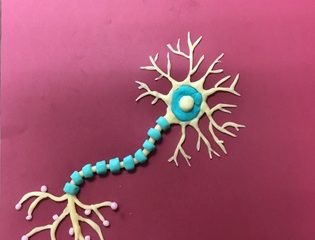Here is what we are reading today:
“Over most of its history, meditation was performed within religious contexts. More recently, however, many people have used meditation techniques to reduce stress. When asked how they feel when meditating, experienced practitioners report a “blissful” emotional state. What might account for this experience?”
“it may be an awkward question, but male St. Andrew’s Cross spiders (Argiope keyserlingi) need to know how many partners their potential mate has already had sex with. Females have two vaginalike receptacles, placed side by side, in which males deposit sperm using two penislike palps. To prevent others from copulating with a former love, males will break off a palp after copulation and permanently seal the female’s genital orifice.”
“The findings, published in the March 27, 2014 issue of PLOS ONE, could help lead to new treatments benefitting affected individuals – and to new ways of protecting servicepersons (and civilians) from similar problems in the future, said principal investigator Beatrice A. Golomb MD, PhD, professor of medicine.”
“Now geneticist Roger Reeves of Johns Hopkins University may have stumbled on another drug target—this one with the potential to correct the learning and memory deficits so central to the condition.”
“”We were interested to examine how individual differences about justice and fairness are represented in the brain to better understand the contribution of emotion and cognition in moral judgment,” explained lead author Jean Decety, the Irving B. Harris Professor of Psychology and Psychiatry.”
“After searching systematically for both published and unpublished studies over 38 years (1975-2013) reporting on the impact of public smoking restrictions on health outcomes in children aged 12 years or younger, Dr Jasper Been from the Maastricht University Medical Centre, in the Netherlands, and colleagues identified 11 suitable studies — five North American studies describing local bans and six European studies looking at national bans.”
“”Mammals usually have large moveable ears, but alligators do not, so they have solved the problems of sound localization a little differently. This may also be the solution used by the alligator’s dinosaur relatives,” said Hilary Bierman, a biology lecturer at the University of Maryland.”
“Based on personal experience, you might think that one of the things that makes you feel thirsty is a dry mouth. Nineteenth century French scientist Claude Bernard tested this hypothesis directly by surgically producing an opening or fistula in the esophagus of his research animals.”




3 Comments
Rachael R. · April 7, 2014 at 9:36 am
The “effect of public smoking bans” made an interesting point about how “only 16% of the world’s population is covered by comprehensive smoke-free laws.” A few years ago, I traveled to Japan and noticed that many people smoke everywhere and it appeared that there weren’t as many restrictions as there are in the U.S. (and especially California). It’s unfortunate that any first-world country, especially one like the technologically-advanced Japan, would still not have more strict laws about public smoking. Hopefully studies like this one will soon change this.
oliviaeinbund · April 15, 2014 at 4:09 pm
Meditation and the brain: I found this particular article intriguing because I do practice yoga and meditation. Further research should be done, but I personally do feel a stress reduction during mediation sessions. I found the long term effects of meditation on the brain especially interesting!
nfreche · June 3, 2014 at 12:31 pm
What makes us thirsty:
As a nutrition major, I always find topics related to food and health interesting. From previous classes, we have covered why people become hungry and how food is metabolized. Although we have covered how fluids flow through the body, we have not discussed about why we become thirsty. From this reading, I learned that there are two pathways to thirsty: osmotic thirst (cellular dehydration) and hypovolemic (low blood volume). The body is truly fascinating in homeostasis. Either too much or too little fluids can create serious problems. This article mentions how hydration is important in endurance sports but how to only drink when thirsty and not in access. This can be comparable from what I have learned in my Maternal and Child Nutrition class: many women in labor worry about dehydration and consume too much water, ultimately causing more problems during labor.